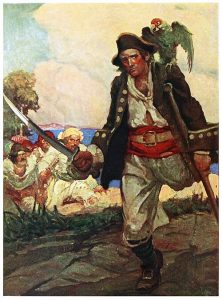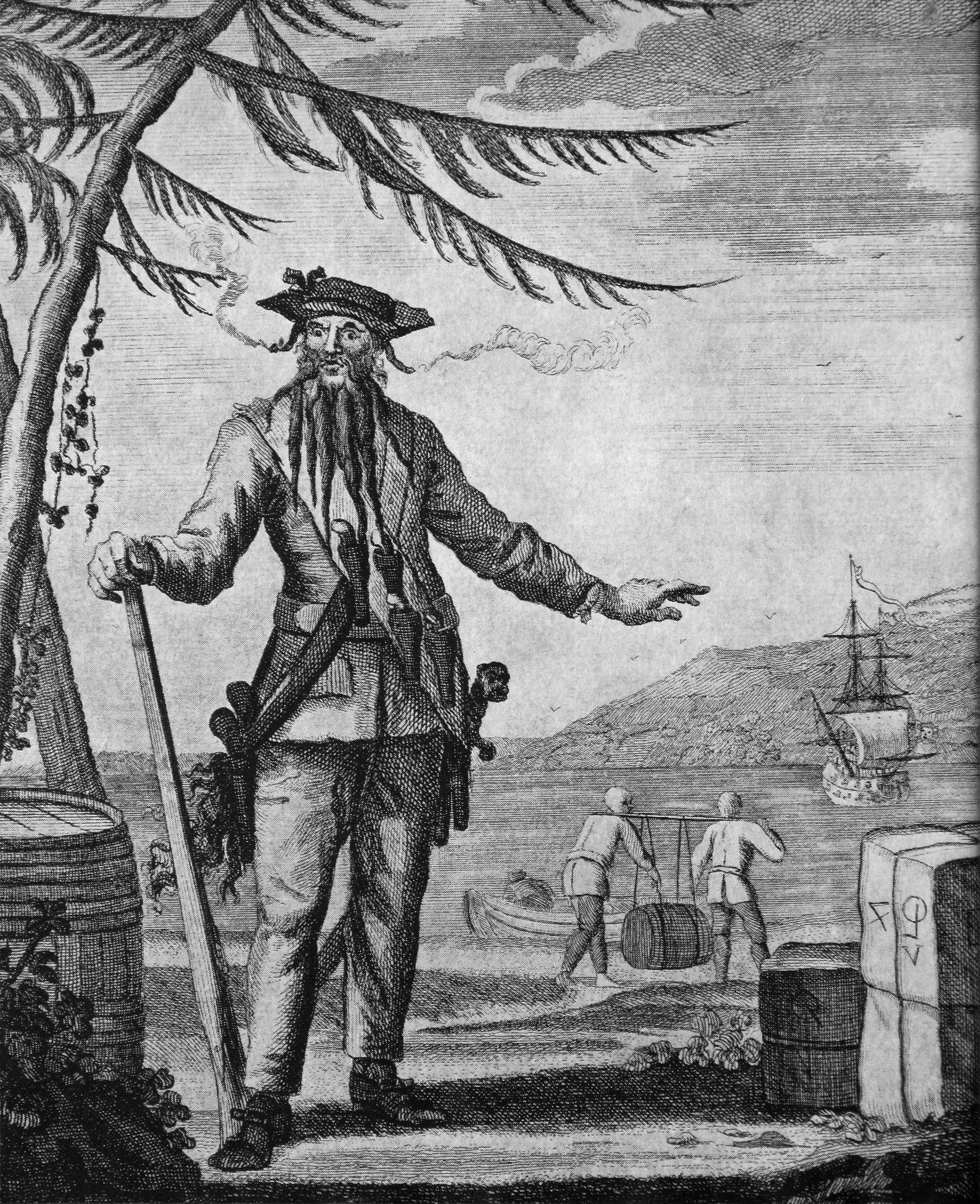Blackbeard, whose real name is known to be Edward Teach, was born in c. 1680, from Bristol. He came from a middle-class family, and he knew how to read and write. According to historical documents, when the War of Spanish Succession broke out in the early 1700s, he was hired as a privateer under the command of Benjamin Hornigold. A privateer was legally sanctioned to rob enemies’ ships under the commission of war. The privateers had a letter of marque that distinguished them from pirates. Hornigold and his crew became privateers and robbed French and Spanish ships. After the war, when their letter of marque expired, they continued to loot other ships, thus, becoming pirates. Hornigold later captured a ship outside Jamaica and took Blackbeard under his wing as a quartermaster. Hornigold eventually retired in 1717 and gave control of his ship and crew to Blackbeard.
Piracy in real life was very different from what is illustrated in movies and books. In the port of Bristol, in the late 1600s till the early 1800s, slave trade was very prominent. Pirates attacked vessels coming from West Africa, which were transporting slaves. Some of them captured the slaves and sold them as goods when they needed more money. Moreover, unlike popular belief, pirates’ treasures did not consist of chests of gold and jewellery. Instead, they aimed to steal valuables, such as medicine, spices, silk, sugar, wine, among others, which they sold to merchants on land. Each pirate ship had its own pirate code that was a code of conduct for governing pirates at sea. One code was that pirates who suffered from injuries that led to amputation received a primitive substitute for the lost limb, like a wooden leg. The pirates got compensated as well. For example, if they lost their right arm, they got 600 pieces of eight, a left-arm was worth 500 pieces of eight, and a lost eye got them 100 pieces of eight. What is real from pop culture is that pirates did have exotic birds as pets. Many had parrots as they were considered a good source of entertainment.

In 1717, Blackbeard captured a French ship named La Concorde and renamed it Queen Anne’s Revenge. He used this ship for less than a year, and it became the pride of his pirate fleet. Blackbeard grew a long bushy beard that covered most of his face and also grew his hair very long. His aim was to look scary enough to intimidate the ships he was raiding into surrender. During that time, in England, there was the removal of the licensing Act and the establishment of copyright law, allowing more freedom to the media. They started writing about Blackbeard frequently in their newspaper because of his looks and his numerous successful conquests. Therefore, he became known in every major port. He was also very charming and charismatic with women, and by the time of his death, he had 14 wives.
In May 1718, Blackbeard and his crew blockaded Charles Town in South Carolina (USA). He was after their medical supplies. He held hostage many prisoners from the province and ransacked a lot of vessels. In that period, many sailors suffered from malaria and yellow fever as they travelled to the West Indies and the Coast of Africa, where these were prominent. Besides, the sailors also frequented brothels when they were on land, and they suffered from STIs, especially syphilis. Therefore, Blackbeard blockaded Charles Town to get the medicine to save his crew. In June 1718, Blackbeard decided to retire and get a pardon under the proclamation for the effectual suppression of piracy. He wrecked Queen Anne’s Revenge on a sandy island and marooned the majority of his crew while he returned to settle in Bath after denouncing his accomplices. Stede Bonnet, later known as Captain Thomas, who was a guest on Queen Anne’s Revenge, realized the betrayal and took command of the crew till he asked for a pardon as well after a few months.
Blackbeard finally returned to piracy just a few months after getting his pardon. He camped out at Ocracoke and eventually teamed up with another pirate, Charles Vane. Lieutenant Robert Maynard was given the commands of two sloop ships to capture Blackbeard as the governor of Virginia put a reward for his arrest. In November 1718, Blackbeard had his last battle on the island of Ocracoke. He was killed and then decapitated by Maynard who suspended his head on the bowsprit of his sloop. The rest of his crew who survived were jailed in Virginia.
Blackbeard was made notorious by the media, and he became part of the golden age of piracy. In 1996, the infamous shipwreck was discovered and was officially identified as Queen Anne’s Revenge in 2011. Nowadays, piracy is still present as pirates pose considerable danger to seafarers. There has been an evolution in the attacks of the pirates as they use modern technology to improve their tactics.
Sources:
Christopher Neville. The Darkside of Piracy: The relationship between Piracy and Slavery in the Early Modern Period from a British perspective. Making history at Macquarie.
Greg Jenner, 2020. Blackbeard [Podcast]. You’re Dead To Me.
Matthew Newton, 2020. Piracy in 2020: the trends you need to know. Schillings.




